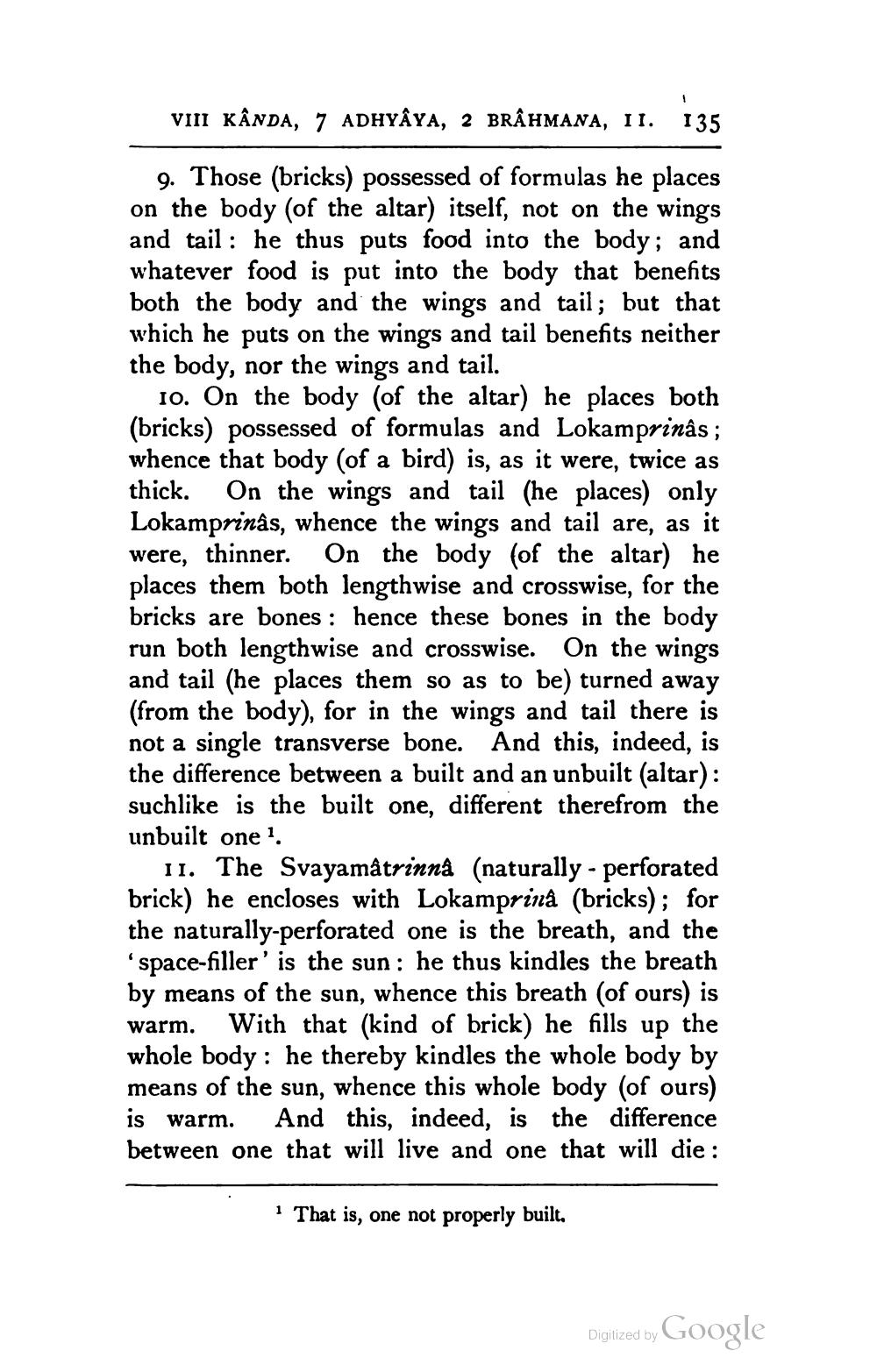________________
vin KÂNDA, 7 ADHYAYA, 2 BRÂHMANA, 11. 135
9. Those (bricks) possessed of formulas he places on the body (of the altar) itself, not on the wings and tail : he thus puts food into the body; and whatever food is put into the body that benefits both the body and the wings and tail; but that which he puts on the wings and tail benefits neither the body, nor the wings and tail.
10. On the body (of the altar) he places both (bricks) possessed of formulas and Lokamprinās; whence that body (of a bird) is, as it were, twice as thick. On the wings and tail (he places) only Lokamprinâs, whence the wings and tail are, as it were, thinner. On the body (of the altar) he places them both lengthwise and crosswise, for the bricks are bones : hence these bones in the body run both lengthwise and crosswise. On the wings and tail (he places them so as to be) turned away (from the body), for in the wings and tail there is not a single transverse bone. And this, indeed, is the difference between a built and an unbuilt (altar): suchlike is the built one, different therefrom the unbuilt one 1
11. The Svayamåtrinnà (naturally - perforated brick) he encloses with Lokamprina (bricks); for the naturally-perforated one is the breath, and the 'space-filler' is the sun: he thus kindles the breath by means of the sun, whence this breath (of ours) is warm. With that kind of brick) he fills up the whole body : he thereby kindles the whole body by means of the sun, whence this whole body (of ours) is warm. And this, indeed, is the difference between one that will live and one that will die :
1 That is, one not properly built.
Digilized by Google




